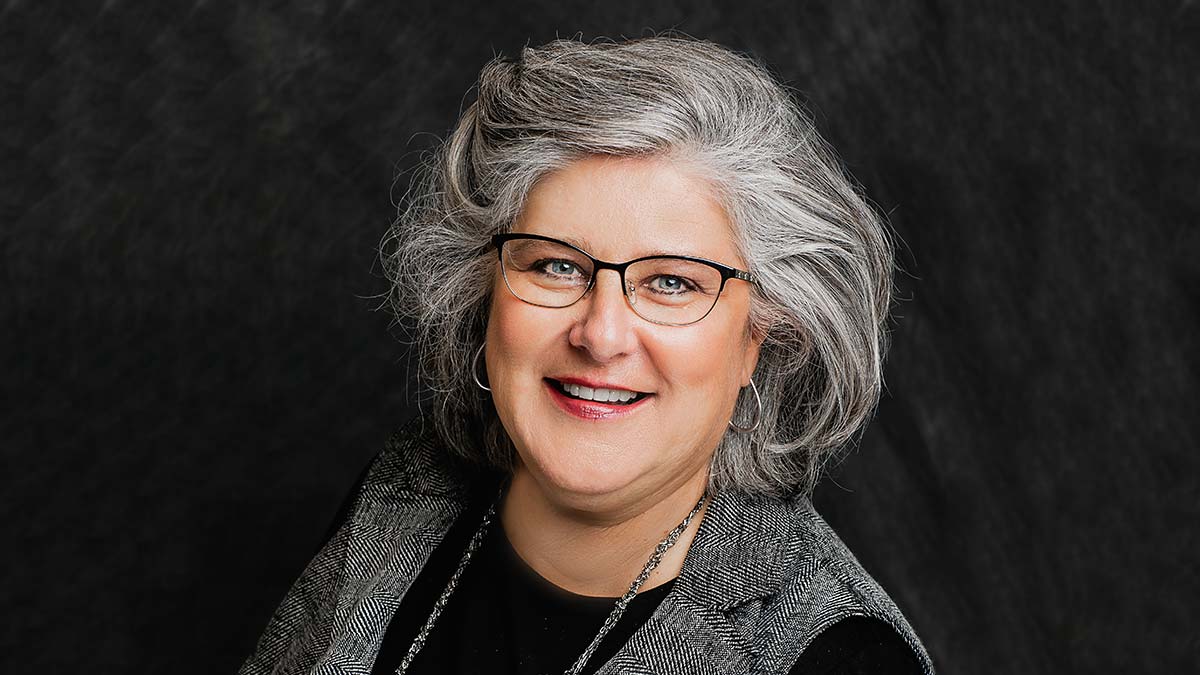
Kimberly McMurray, principal at Behavioral Health Facility Consulting (BHFC), expresses a compassion for design for mental and behavioral health.
She often says, “I am blessed to have the opportunity to do something I love in a way that adds value to others’ lives.” We think McMurray is genuinely a blessing in the industry and to those who are lucky enough to spend time with her.
McMurray was not always an in-demand design consultant to behavioral healthcare facilities. For thirty-five years, she was an in-demand architect at some of the international powerhouse firms. Following the 2011 tornado that significantly impacted her hometown of Tuscaloosa, McMurray decided to take her architectural career back home. She began working with psychiatric hospitals in the area and met Jim Hunt, founder of Behavioral Health Facility Consulting, LLC.
“Jim had more work than he could handle. As we got to know one another, I started sub-consulting with his company as a behavioral health designer to help and found myself once again working on the national landscape, outside of Tuscaloosa,” said McMurray.
Several years passed, and when it came time to retire, Jim asked McMurray if she and her firm would be interested in purchasing the company. But her architect partners were happy to remain a small, regional firm and were not looking to expand. McMurray, remembering that time, said, “After a lot of thinking and praying, I had a God wink moment that led me to know I needed to purchase Jim’s company on my own.”
That is precisely what she did. In May 2018, McMurray retired from architecture and acquired ownership of a thriving mental and behavioral health planning and design consulting practice. In 2019, McMurray rebranded the company as BHFC Design.
Changing the Mental and Behavioral Health Stigma
McMurray is driven to be a change agent with the quest of bettering the built environment for the mental and behavioral health patients as well as the facility’s staff. She cites three words as her driving focus:
- Therapeutic: The environment has to support the therapeutic strategies of the organization
- Restorative: Elements of design must be uplifting and healing
- Safe: Safety of the patients, staff, and visitors at all times
When we asked McMurray why behavioral health design was so important to her and why she has dedicated this “last season” (her words) of her career to improving the lives of strangers, she was quick to push back. For McMurray, there are no strangers.
“Patients are not just someone else’s kid. They are you and me. They could be my husband tomorrow. They could be my daughter tomorrow. They could be me tomorrow,” she said. “So, you don’t draw that line and say why you want to help people you don’t know. I chose the pathway and journey of an architect out of a strong humanitarian need to fulfill. It’s in my DNA. It’s my life.”
Driven to Make an Impact
As an intern and recent college graduate, McMurray found herself drawing details in a back office and wondering how she could transition into a role that would both engage her more directly with people and make a positive impact. She sought the advice of a career counselor who told her to find a part of the business where she thought she could make a difference in her day-to-day work in order to fulfill her compassionate drive. And so, back in the early ’90s, McMurray embarked on her healthcare design journey. In healthcare, she could have a positive impact on patients, their families, and the caregivers.
“You’re making lives different through your designs. You’re improving the quality of care and you’re improving the quality of the environment. I’ve had a career-long aspiration to make a difference in the built environment for the people that use and live in it every day.”
More than a decade ago, McMurray got deeply involved with the Institute of Patient-Centered Design as a volunteer. Their mission—to contribute to the quality of healthcare delivery through patient-centered design advocacy, education, and research—resonated with her.
“One of our most rewarding projects has been our examination of the patient room and asking, could it be better? Could it be better for the patient? Can it be better for the family? Could it be better for the caregivers? We then share our findings with the design industry.”
Focusing on the Right Kind of Change
McMurray’s business plan does not include an army of employees or a big exit strategy of selling the business. Her only objective is every day to do her best and to make a difference.
“I don’t know where the business will go when I decide to retire. I know the Lord has a plan for this endeavor to continue. That will lead me to what I need to do,” said McMurray. Then she quickly added, “But I don’t worry about that. That’s a few years down the road, right?”
BHFC Design typically collaborates and works with small- to mid-sized architectural firms that don’t have the expertise in-house. McMurray also works directly with the hospitals. That mix—of small firms and large hospitals themselves— really demonstrates her tagline: The intersection of compassion and design.
Where Do We Go from Here?
McMurray looks toward the future with hope as people with influence begin to recognize that we are in a mental health crisis. Communities are beginning to recognize the need for crisis centers. For the past five to ten years, we have begun to shine a light on the importance of mental and behavioral health instead of hiding patients away in society’s shadows.
McMurray believes there isn’t one single thing one can point to, to explain why the stigma is disappearing. Still, she thinks that regulatory changes beginning to be discussed and greater societal recognition that mental health is brain health are major drivers of change. Mental and behavioral health can be effectively treated like any other illness, and people with mental and behavioral illnesses can live successful and rewarding lives.
With that change in perspective comes improvements in the industry. McMurray said that some organizations are building new and responsive psychiatric hospitals instead of hiding them in the older units of their general hospital facilities. These forward-thinking organizations recognize the need to pay attention to the unit’s design for safe and restorative patient care. They understand that therapeutic environments do make a difference and psychiatric facilities have unique needs.
Providing Dignity Through Design
McMurray also wants to see more dignity elements put into the design.
“One element that I’ve heard Jim mention a number of times when talking about giving dignity back is the simple need of getting a drink of water,” said McMurray. She explained, “We took all the water fountains out of behavioral health units due to the safety risk these present. When someone is thirsty, they have to find a staff member and ask for a glass of water. Hydration is a fundamental element of life, right? If we can find a way to safely provide water to patients so that on their own, they can go and retrieve a glass of water, that’s a dignity factor.”
McMurray said that understanding has birthed a change in the manufacturers, as well. They now understand that their products need to look less institutional.
“Suicide-resistant products are an absolute must. It’s imperative. I’m so happy that the marketplace is starting to respond by creating ligature-resistant elements that have some familiarity with normalcy and that they’re not cold and institutional,” said McMurray. “I hope that our marketplace will continue to develop products that are ligature-resistant, but that also offer a therapeutic and restorative environment for these patients—a familiar environment.”
That wording is carefully chosen. McMurray cautions against using the term “home-like” to describe products because people have different reflections of home.
Practicing Evidence-Based Design
McMurray is also a big proponent of evidence-based design in all applications because the built environment impacts human behavior, human outlook, and human performance.
“So, in an environment that is treating the brain, the cognitive, the behavioral, and the mental illness, evidence-based design is most important to begin to understand how naturally a person is going to behave or respond to the environment,” said McMurray. However, she doesn’t think the design industry has begun to adequately focus and share evidence-based design studies for mental and behavioral health environments.
McMurray is seeking more opportunities to conduct research and has several projects running right now. Some of her studies apply to sensory elements such as lighting, music, aroma, tactile surfaces, sensory experiences, positive distractions, and how these and many other factors can positively affect patients. “I think the sensory elements and how these elements are incorporated into the unit’s design is most important because mental and behavioral health therapy involving cognitive treatments of mental disorders recognizes the importance of the response of the patient to the environment,” said McMurray. “And so, if you’re able to introduce elements that can help you control that, then I think it’s very much needed, but it’s an area in which we have a long way to go.”
Another area McMurray would like to see more studies is the design of the staff station.
“There is a lot of fear about opening that up. Yet many designers have been successful in convincing caregivers to provide open staff stations,” said McMurray. However, she cautions, there is much potential for harm with “weapons” that patients can obtain from behind the nurse’s station.
McMurray said that particular danger could be alleviated by raising the station so the patient cannot reach over it. However, she has clients where patients have jumped over station counters or through open windows, which leads a hospital to install glass around the station. Instead of piling fixes on top of one another, McMurray is hopeful this area will be studied further. Perhaps a hybrid solution will come to light. She hopes to see a staff station that is open yet safe, adjacent to an enclosed space of refuge that patients cannot access in the event of a crisis.
“This way, we can celebrate the better parts of both worlds,” said McMurray.
McMurray’s advice to architects and designers is not to try things just because you’ve read them in a magazine or because it’s a trend.
“Particularly in this environment, you’ve got to consider the ramification of what the design is going to create. You can never have a totally ligature-free environment, but you can strive to have one that is ligature-resistant,” McMurray explained.
You can find out more about Kimberly McMurray and her practice, BHFC Design, on her website. There, you can also download (for free) the newest edition of the Behavioral Health Design Guide, a 158-page guide created for architects, designers, and facilities.
